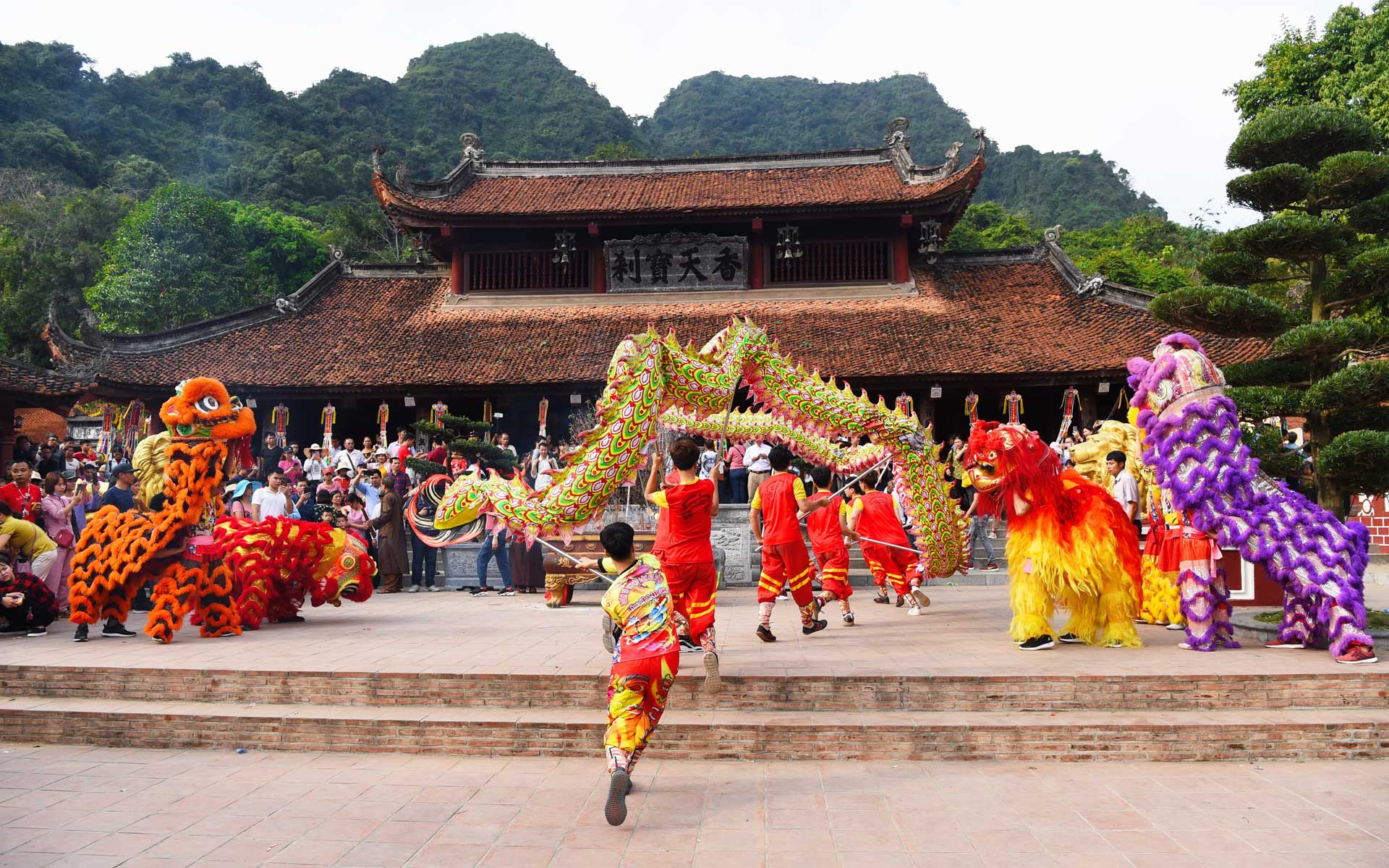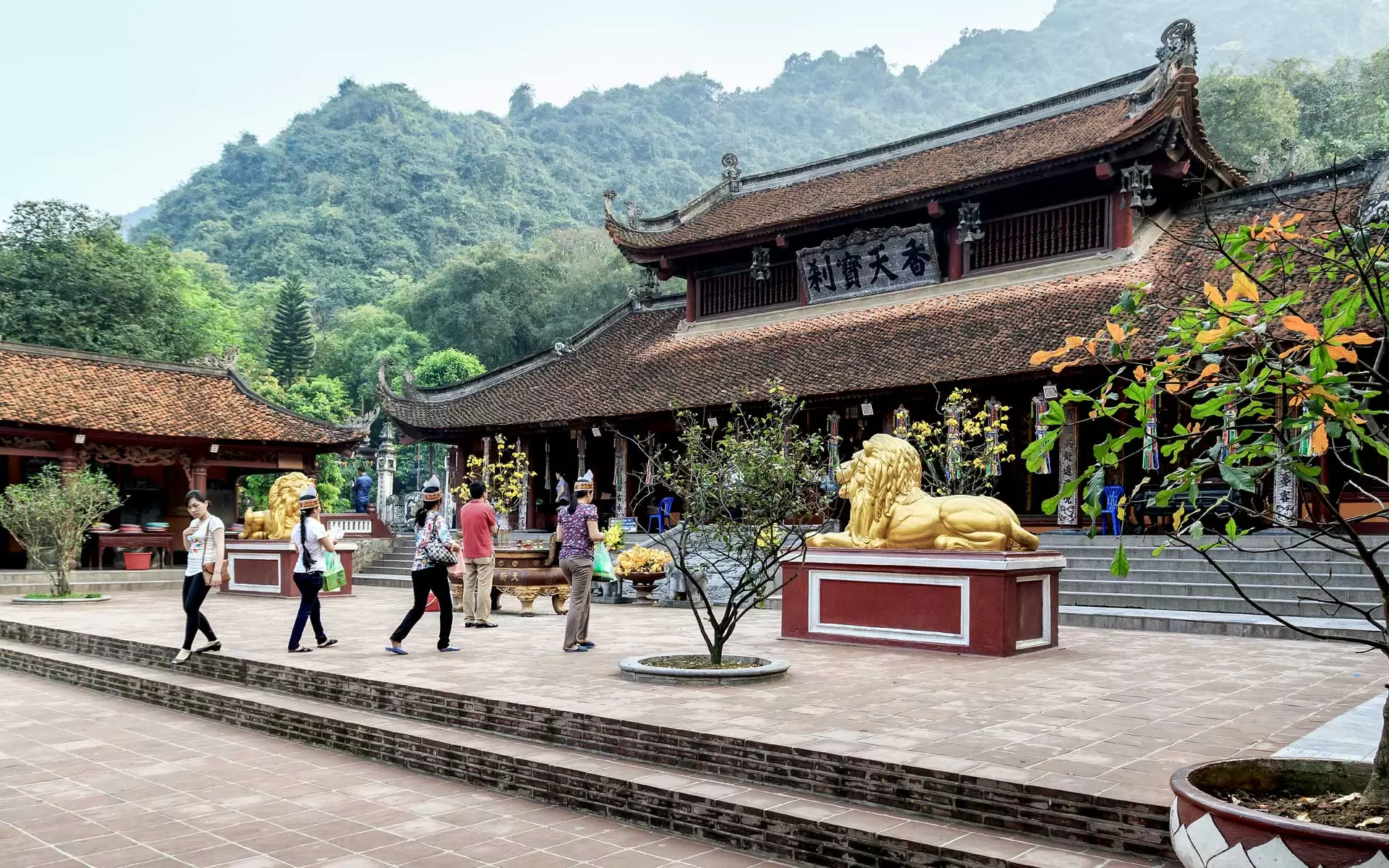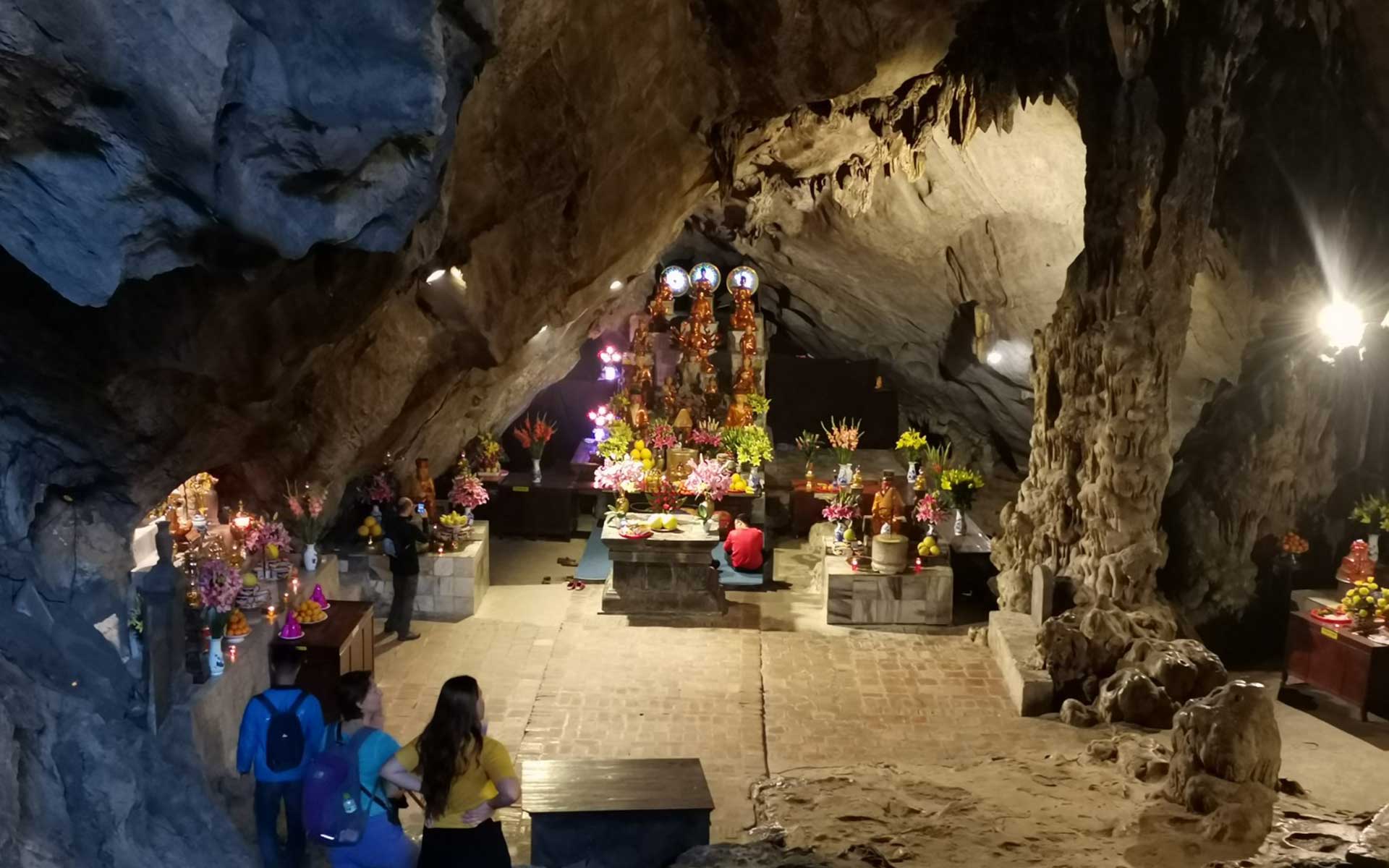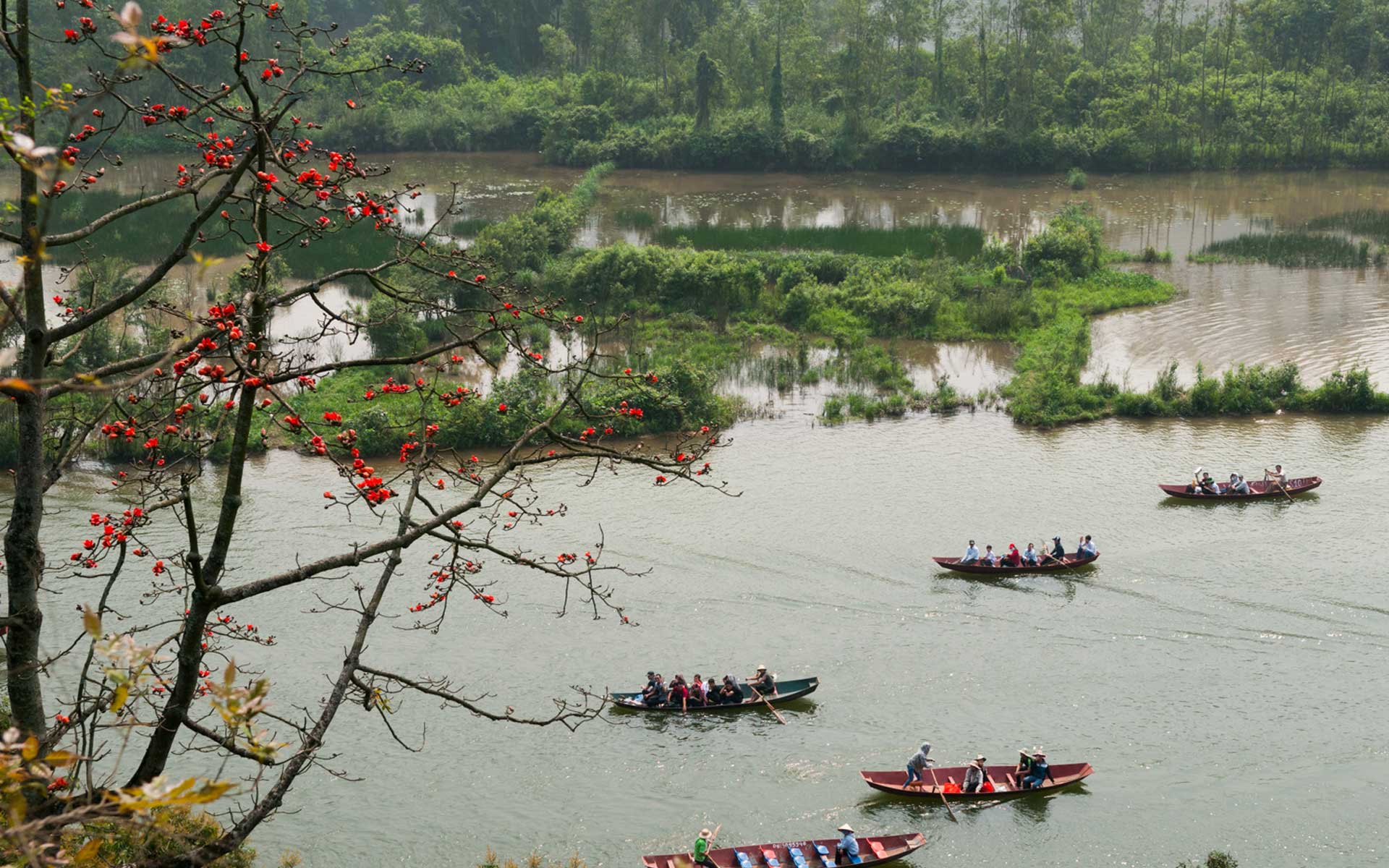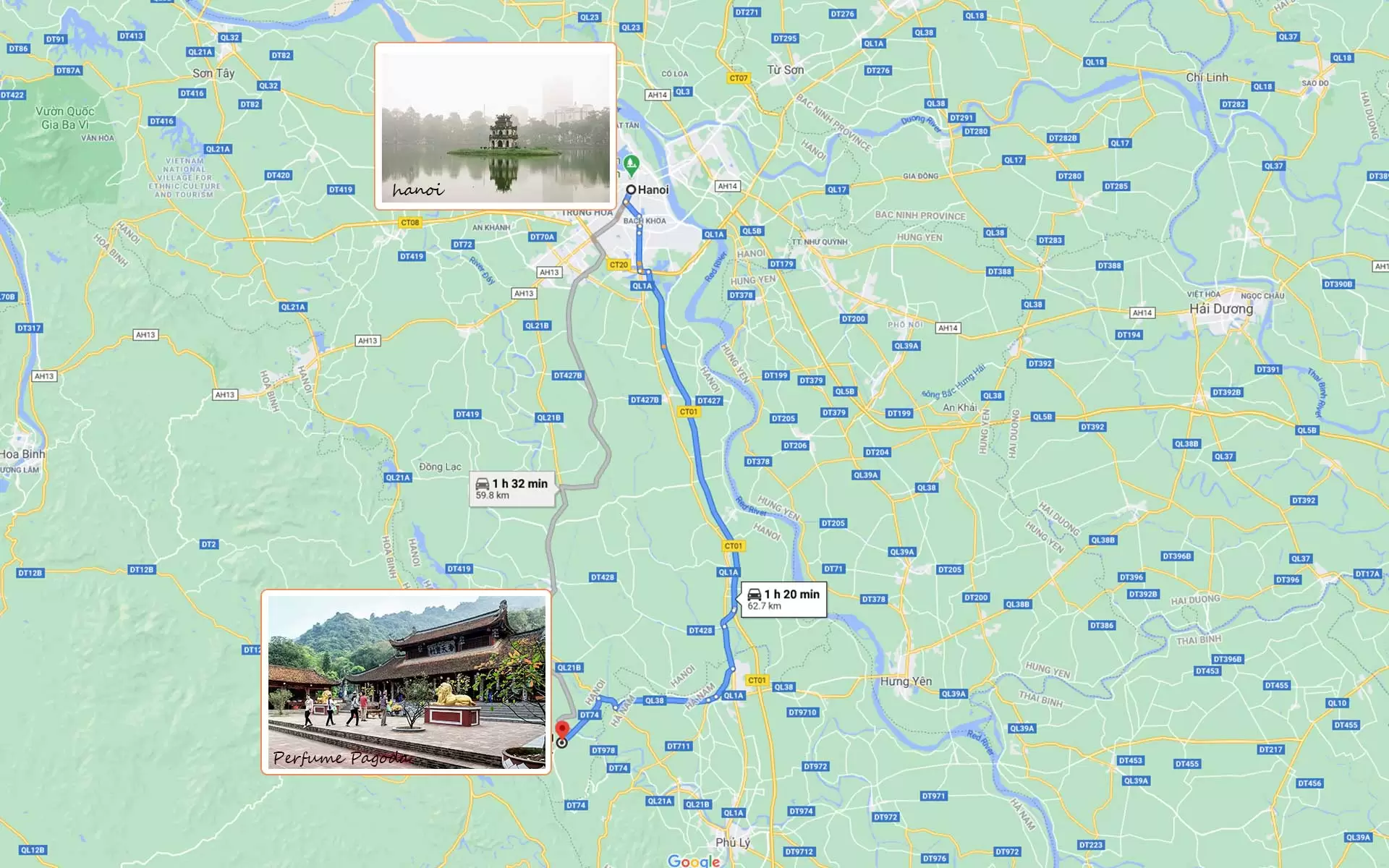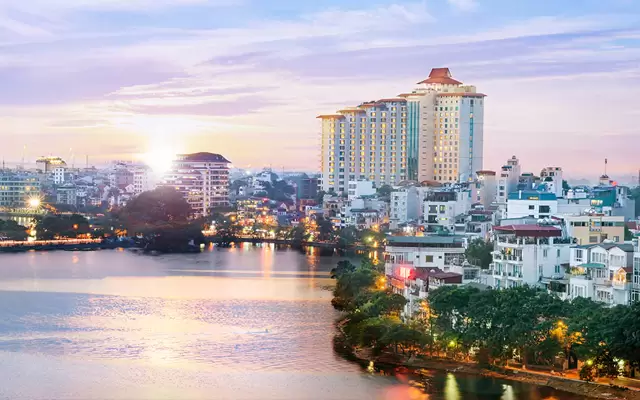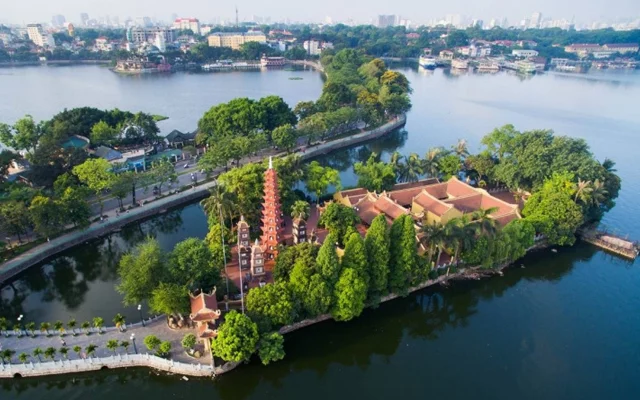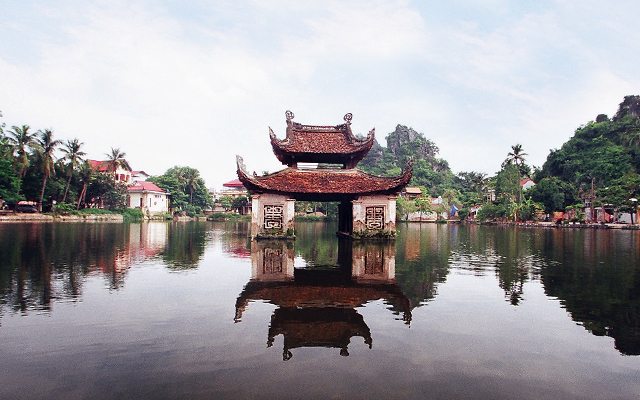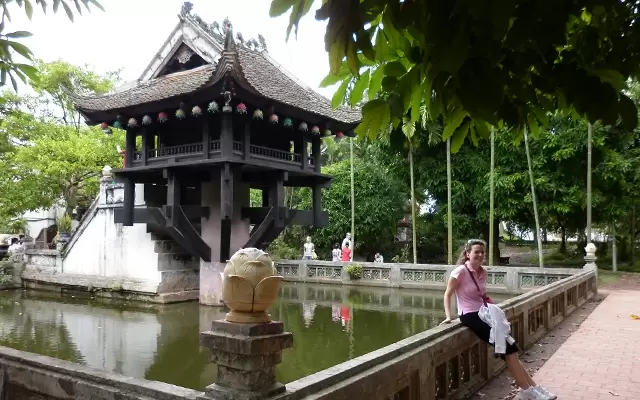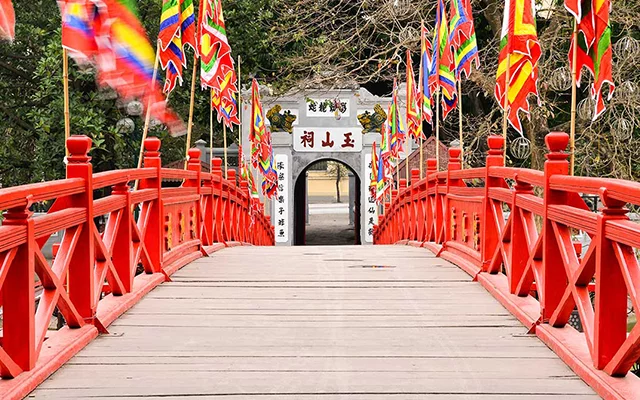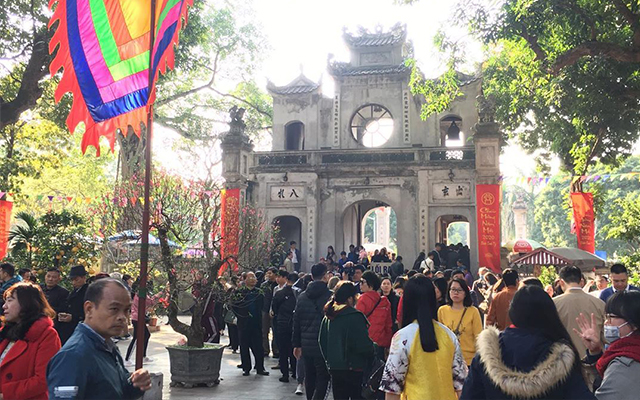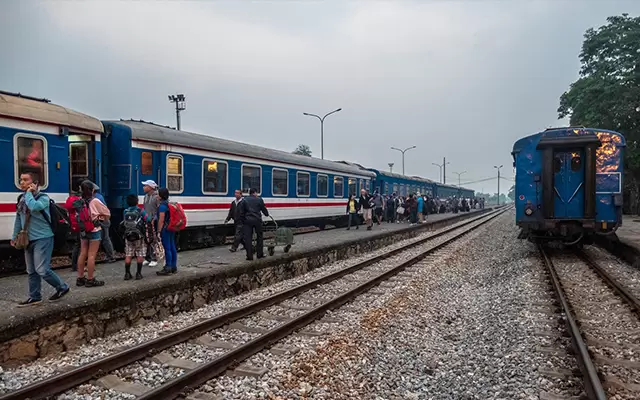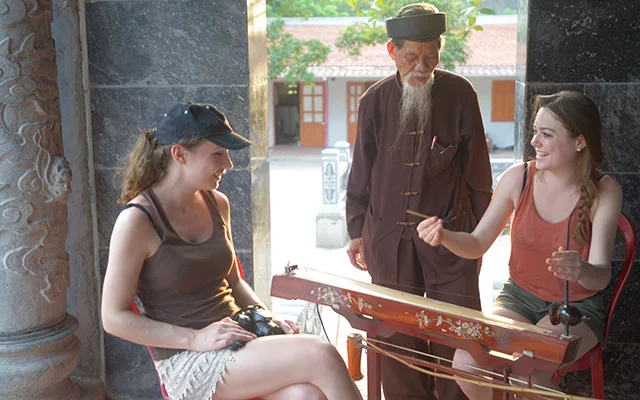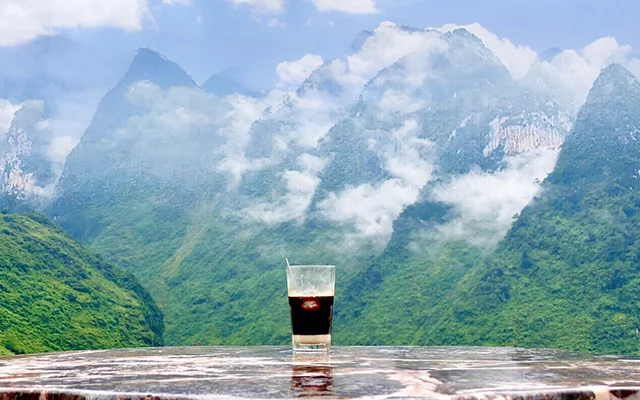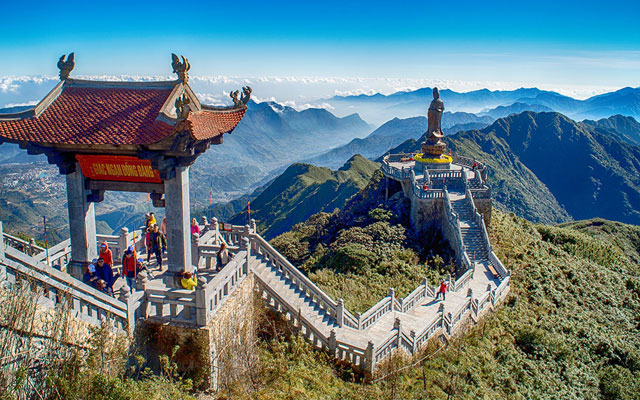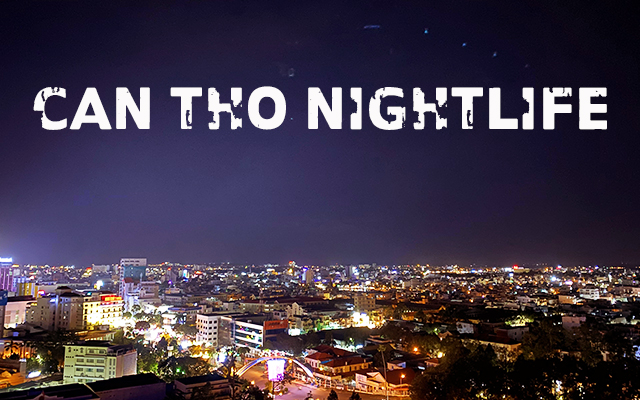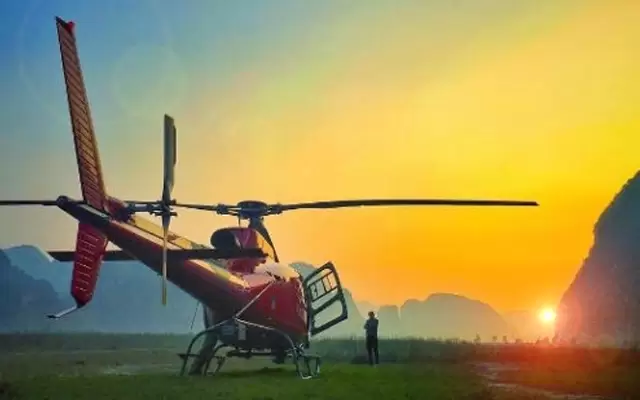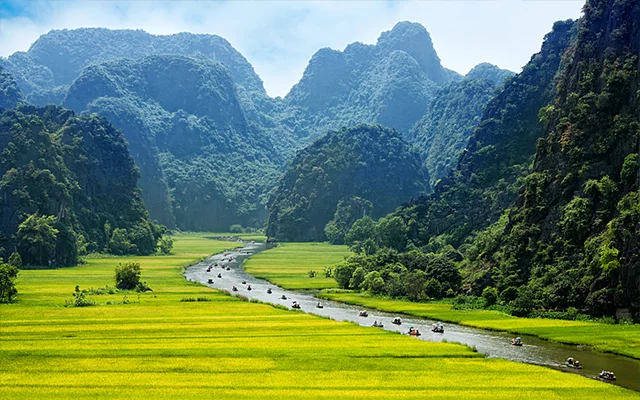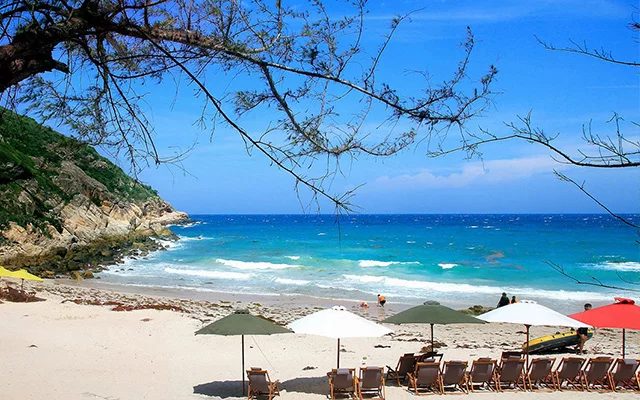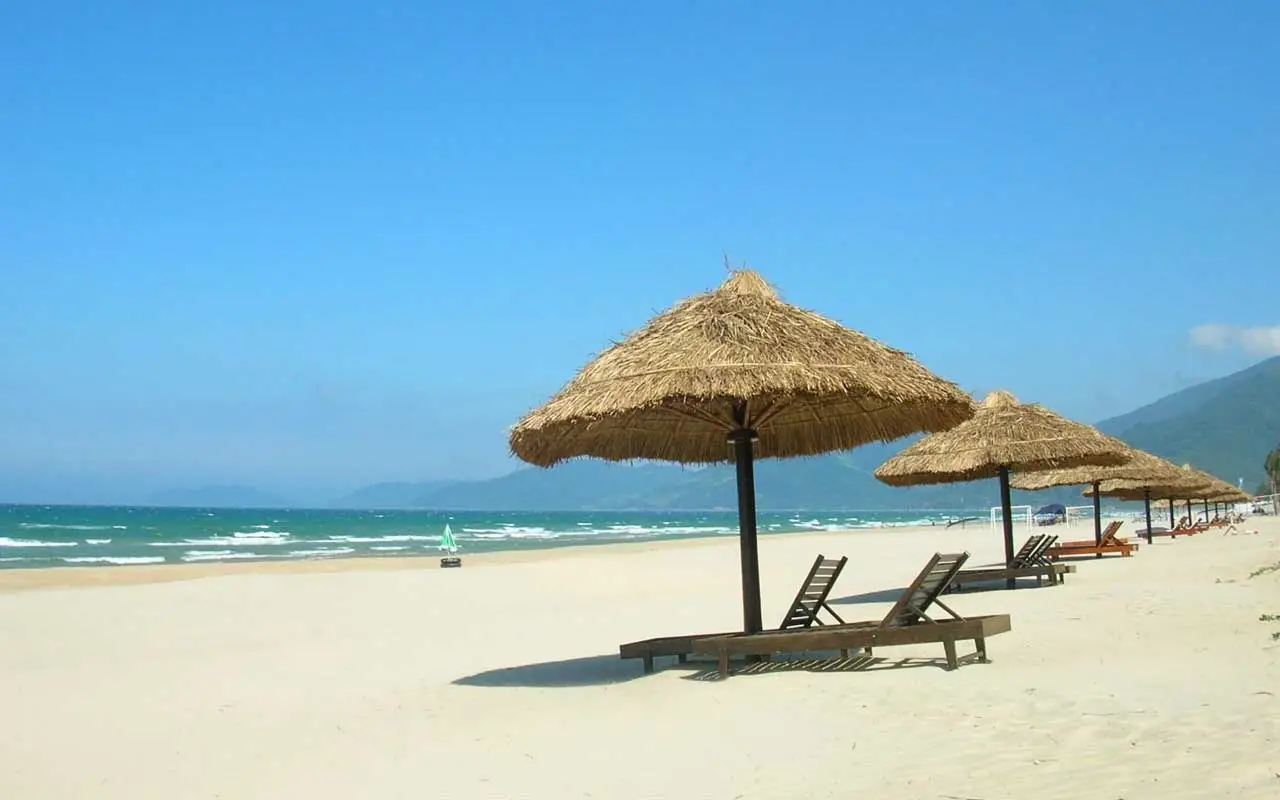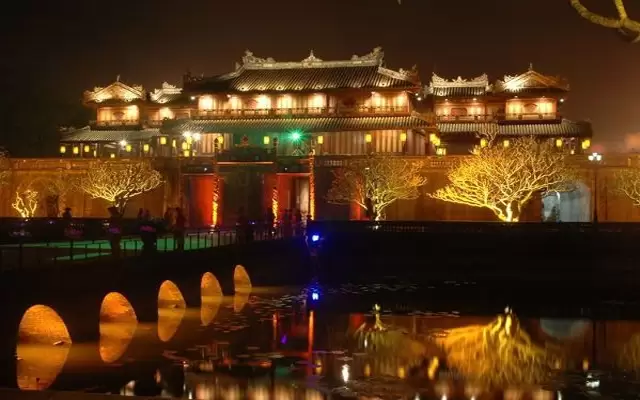Perfume Pagoda – a sacred religious site in the outskirt of Hanoi
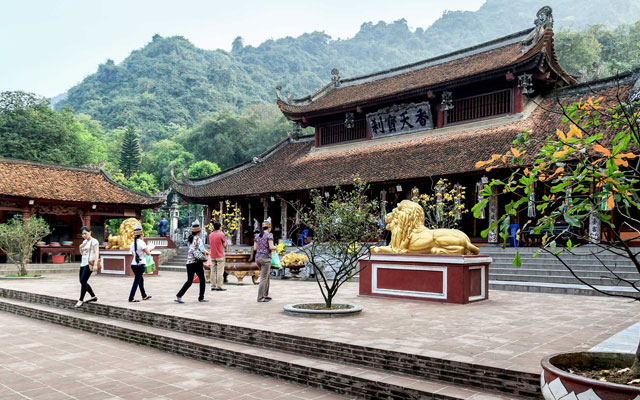
Perfume Pagoda is a striking complex of Buddhist temples and pagodas built into the limestone cliffs of Huong Tich Mountain. Being known as a sacred religious site in the outskirt of Hanoi Capital, Perfume Pagoda attracts large numbers of pilgrimages from all over Vietnam, especially during its festival in the first three months of Lunar New Year.
History of Perfume Pagoda.
It is believed that the original temple of Perfume Pagoda Complex was a small structure located on the current position of Thien Tru Pagoda. And it was built in the 15th century, during the reign of King Le Thanh Tong. However, legend declared that this site was found out over 2000 years ago by a meditating Buddhist monk. Then he used the name of a Tibetan mountain where Lord Buddha practiced asceticism, to call the site.
The building of a terrace, stone steps was dated back 1686 in a stele at the current temples, during the reign of King Le Hy Tong. The current bronze statues of Lord Buddha and Quan Am was put in place in 1793, whereas the original ones dating back to 1767 were damaged through ups and downs of time and history. Suffering from the French and the American wars, Thien Tru Pagoda’s gate and bell tower were destroyed. Therefore, the renovation of bell tower was made in 1986 and the gate reconstruction was completed in 1994.
The most popular attractions in Perfume Pagoda.
As mentioned earlier, Perfume Pagoda is a large complex of different Buddhist pagodas, temples, and shrines on mountains and hills. Within the scope of this article, we will give information of the better-known sites which are suitable for one-day trip from Hanoi to Perfume Pagoda.
- Trinh Temple.
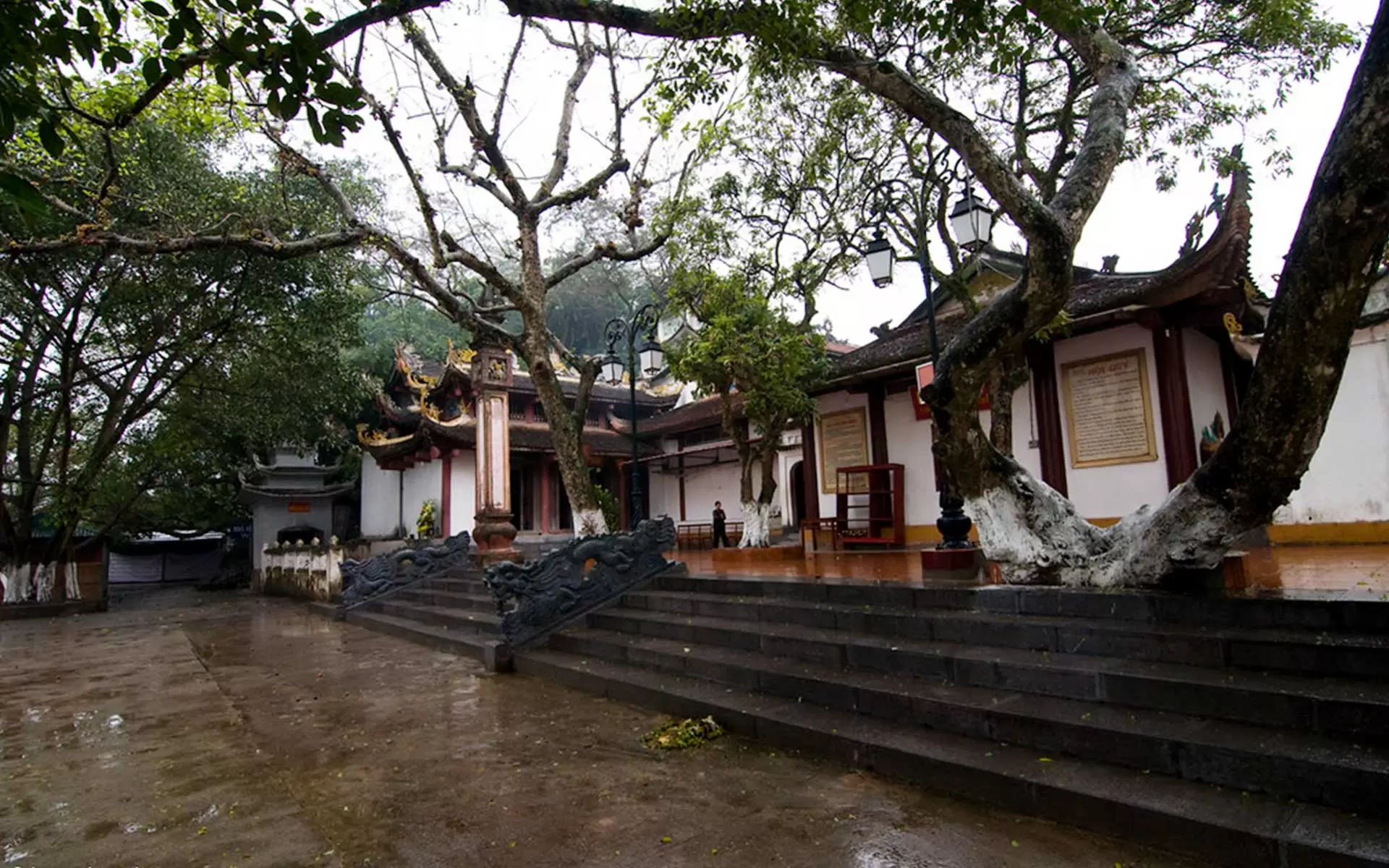
Trinh Temple – where pilgrimages offer their first joss sticks to local deities to inform about their presence and wish for a good trip ahead.
Taking rowing boat about 300m from the starting point – Duc Wharf, tourists will approach Trinh Temple as the very first stop. Trinh Temple can be translated as “Presentation Temple”, where pilgrimages offer their first joss sticks to local deities to inform about their presence and wish for a good trip ahead. It’s also known as “The Temple of High-ranking Mandarin” because it was built to worship General Tu Ma, who assisted Hung King protect the country from outside invaders. There are two kneeling elephants on both sides of the temple’s entrance gate.
After being severely destroyed during the war against the French colonizers in the 20th century, the temple was rebuilt in 1992.
- Thien Tru Pagoda.
Ending the 45 minute boat trip along poetic Yen Stream, tourists will disembark and access to Thien Tru Pagoda, which can be loosely translated as “The Pagoda Leading to Heaven”. The other name of this pagoda is Chua Ngoai (The Outer Pagoda). As one of the main sites within the whole complex, Thien Tru Pagoda is where festival opening ceremonies take place. Boasting a gorgeous architecture, the pagoda is the fine example for a harmonious blend of Chinese and Vietnamese architectural style. The pagoda houses some stupas with special architecture and significant religious values. The brick structure – Vien Cong Bao Stupa is the buried place of Zen Master Vien Quang, who reconstructed the pagoda. Nearby is another stupa named Thien Thuy Stupa, which was natural created from the erosion of a rocky hill. In addition, Thien Tru Pagoda is the home to a bell tower and Hall of the Triple Gem, which was recently restored in the 1980s. Coming inside the pagoda, tourists can see the large statue of Quan Am Nam Hai.
- Giai Oan Pagoda.
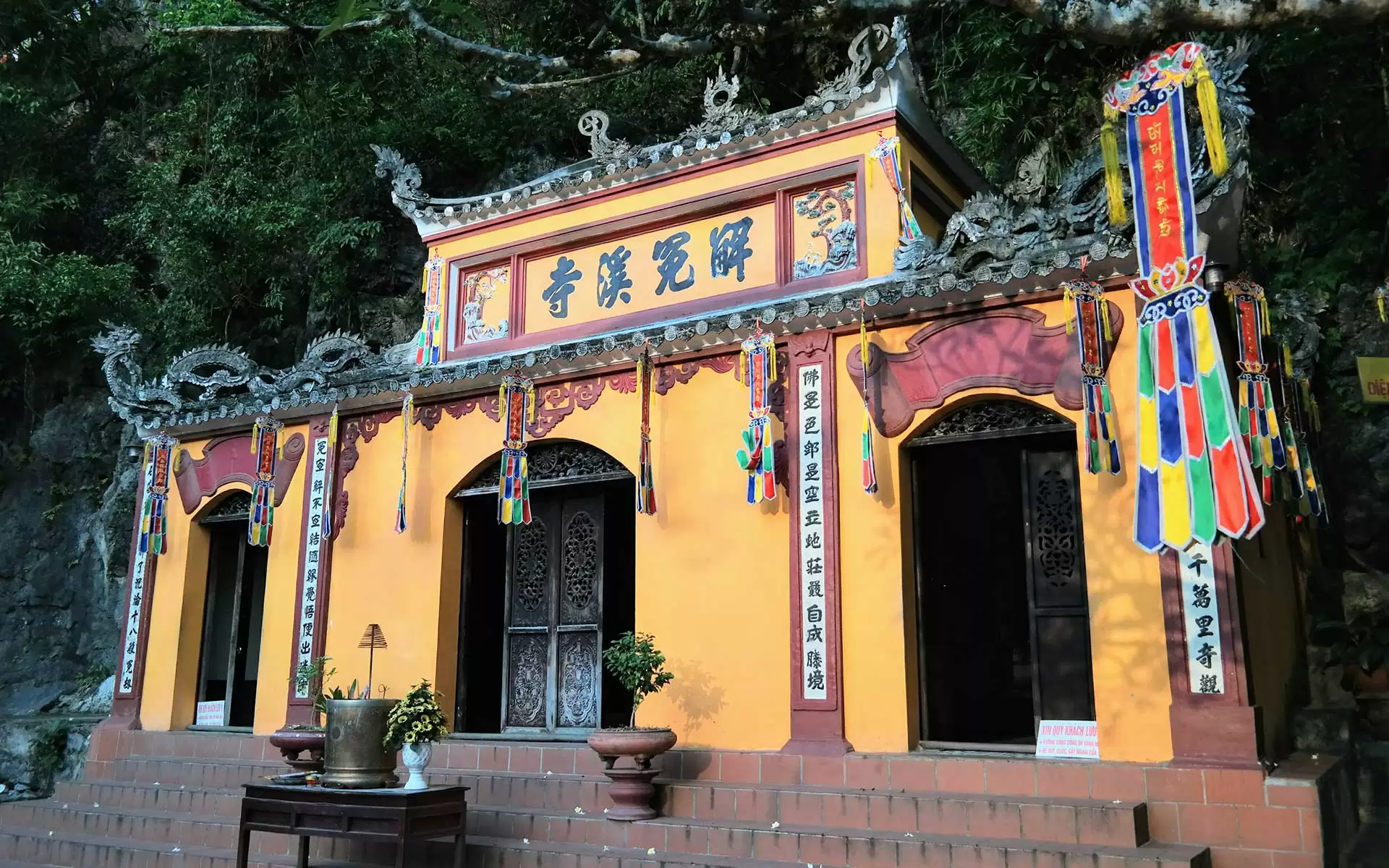
Giai Oan Pagoda – where people believe that deities can purify souls, cure sufferings and grant offspring for childless families.
In the middle road between Thien Tru Pagoda and Huong Tich Grotto lies Giai Oan Pagoda. With the meaning as “The Pagoda of Exculpation”, this pagoda is the place where people believe that deities can purify souls, cure sufferings and grant offspring for childless families. The highlight of this pagoda is Giai Oan Stream coming from nine sources and Long Tuyen Well with natural blue water.
- Huong Tich Grotto.
Huong Tich Grotto (Grotto of Fragrant Traces) is regarded as the major reason for pilgrimages coming to Perfume Pagoda Complex because it’s home to Perfume Pagoda, or also known as “The Inner Pagoda”. The huge entrance of the grotto as well as the pagoda astonishes tourists because it looks like an open mouth of dragon. Being carved to the wall at the grotto’s mouth are ancient Vietnamese letters: “Nam Thiên Đệ Nhất Động”, which dated back to 1770. This inscription can roughly be translated as “The Foremost Grotto of the Southern World”. “Southern World” refers to the nation of Vietnam because it’s located geographically in the south of China. Entering the Inner Pagoda inside the grotto, tourists will be surprised by many statues of Buddha, Avalokitesvara, and other Buddhist deities, which were carved from green stones. The most impressive statue here is Statue of the Buddhist Goddess Quan Am. Quan Am’s “left leg is stretched out and the foot lies on a lotus flower, her right leg is bent and is supported by a lotus flower with supple leaves; a hand holds a pearl.”
In addition, there are many natural stalactites and stalagmites inside the grotto. Over many years, some of them have become smooth because people believe that if they touch and rub these things, miracles and good luck will come to their life.
There are 2 options to reach Huong Tich Grotto: climbing or taking cable car. The uphill trip takes an hour climbing to thousand stone steps of high slope, which requires very good physical conditions from climbers. Sometimes there are some slippery stone steps so tourists must be careful and wear comfortable walking shoes or sandals. However, it’s quite a memorable experience with breathtaking scenery along the way. You can feel incredible green trees towering all around you and sometimes catch the moment of local farmers’ daily life.
Whereas, the trip by cable car lasts only 10 – 15 minutes to reach the grotto’s entrance gate. Sitting on the cabinet, you can admire the romantic beauty of the below landscapes with mountains, forests and temples dotting along the way.
Highlighted activities in Perfume Pagoda.
- Taking pilgrimage to Perfume Pagoda in Lunar New Year.
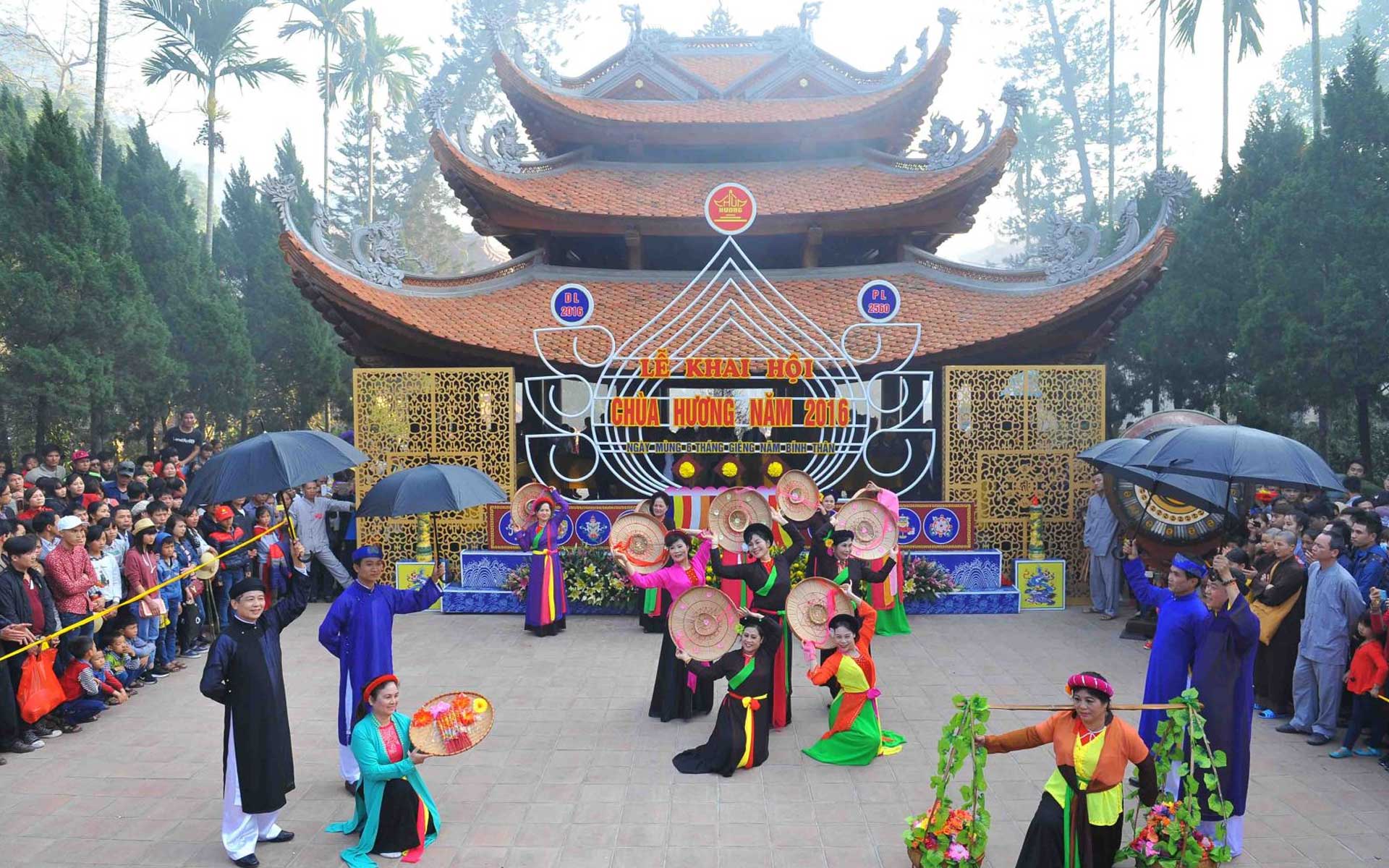
Millions of Buddhist pilgrims and visitors take part in Perfume Pagoda Festival after Lunar new Year.
Perfume Pagoda Festival is one of the largest religious events after Lunar New Year in the Northern Vietnam, which attracts millions of Buddhist pilgrims and visitors. It’s also the longest lasting festival in Vietnam. The festival period lasts from the 6th day of lunar January to the 6th day of lunar March. But the main festival takes place during 15th to 20th of the second lunar month.
During the festival, spiritual events are taken place include: incense offering ceremony, the procession, and the Zen ceremony. There are three religions dedicated in this festival: Buddhism, Confucianism, and Taoism. To be considered as the extremely sacred religious site, Perfume Pagoda and its festival attract thousands of Vietnamese pilgrims to come and pray for a healthy and prosperous coming year. Especially, people who have difficulty in giving birth also wish blessings for their fertility. Therefore, all festival participants try their best to overcome tough route to reach Huong Tich Grotto. They have strong belief that deities will see through their strong determination and their wishes will come true.
Beside exploring Vietnamese tradition and culture in this festival, tourists can have chance to take part in interesting traditional games like the rice-cooking contest, the tug of war, and so on.
- Rowing boats along Yen Stream in seasonal flower blossoms.
Being surrounded by beautiful and mystical limestone mountain, Perfume Pagoda is only can be reached by 45-minute rowing boat trip. Boat journey along romantic Yen Stream gives visitors tranquil moments from their inner space. In contrast to the overcrowded situation of the festive season in spring, Perfume Pagoda has tranquil atmosphere during the rest time of the year. If you want to escape from the hustle and bustle of big cities and enjoy quiet moments in the idyllic countryside, just visit Perfume Pagoda in early April (after the festival period) or between October and November. Those are the time of seasonal flower blossoms.
Red silk cotton flowers or also called as bombax ceiba are in full bloom in early April as the sign of coming summer. Visiting Perfume Pagoda during this time, tourists will be impressed by the beauty of those ardently burning-red flowers blooming along the bank of Yen Stream while taking boat trip to the pagoda.
Another great time for boat trip along Yen Stream is in the November when water lilies begin to bloom. These gorgeous purple flowers are dotted in the gem-blue Yen Stream, which creates an exceptionally poetic scenery to immerse yourself in. You also can catch the moments of beautiful Vietnamese ladies wearing Ao Dai and taking stunning photo shoots checking-in with water lily.
Rowing boats along Yen Stream in these flower seasons, you can feel being lost into a fairy land and the sacred vibe of the pagoda in the most authentic way.
How to Get There?
The journey to the Perfume Pagoda is itself an interesting experience with the combination of road, waterways and cable car. And you are highly recommended to embark it with a local tour guide who will optimize your time in this complex with most comfort during one-day trip.
Perfume Pagoda is located about 60km southwest of Hanoi and you will need to take a car for around one hour from Hanoi City center. Arriving Duc Wharf, you will have 45-minute rowing boat along scenic waterways between limestone cliffs. You have option to take break and visit some main temples along the way. Or you can head straight to the foot of mountain. From there, the journey to reach Huong Son Grotto can be done by one hour climbing or ten-minute cable car. The best option is taking cable car uphill and then descend on foot so that you can save time and also enjoy spectacular views from different aspects. Cable car ticket costs 100,000 VND one way and 160,000 VND return.
Looking for things to do in Perfume Pagoda? Contact Vietnam Travel right now to receive sample Perfume Pagoda tours, which are designed to give you some suggestions for what is possible when you travel in Perfume Pagoda.

